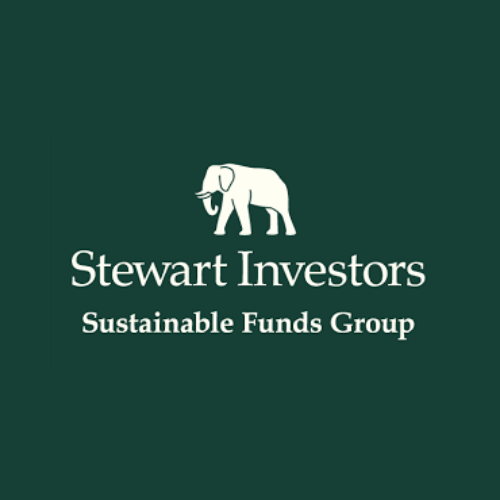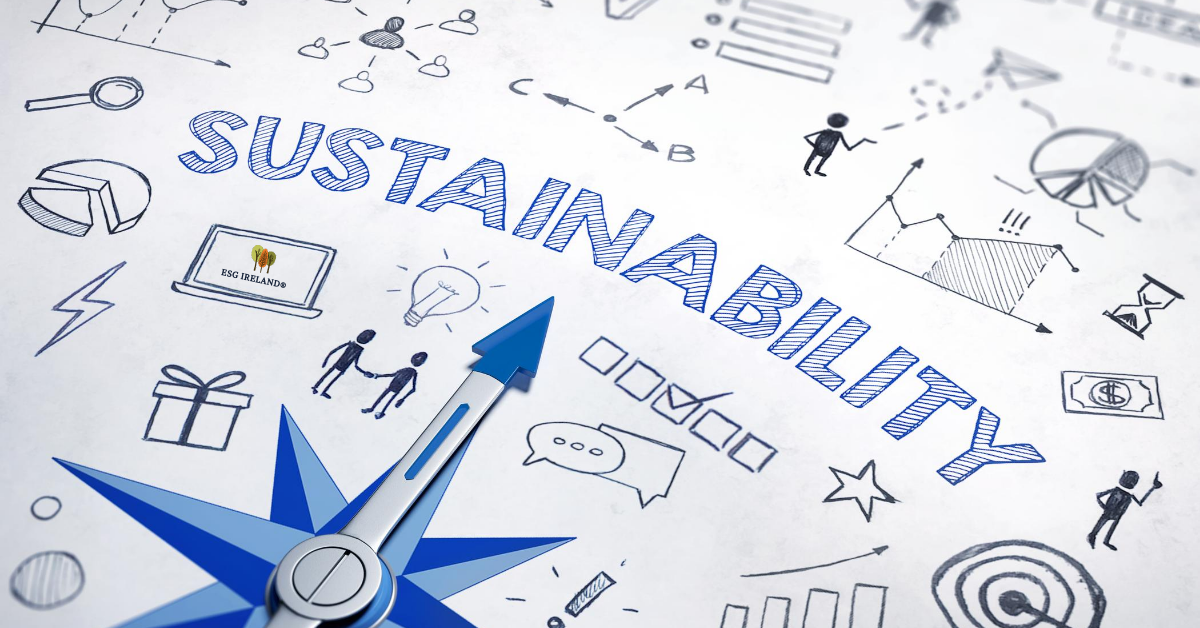Why sustainable development and returns can be achieved in emerging markets


By Jack Nelson, Stewart Investors
Sustainable Funds Group
In late 2013, we wrote a company report on a Zambian bank. The company had a customer base of around 650,000 people, made up of consumers, farmers and small and medium enterprises.
Banking penetration in Zambia at the time was especially low; only 18% of adults had bank accounts, compared to 65% in Nigeria and Kenya.[1] In that context, we were excited by the prospect of a company well-positioned to extend financial inclusion at primarily the bottom of the pyramid in Zambia and benefit from that tailwind.
The bank certainly appeared to have the quality to take advantage of this opportunity. Its largest shareholder was a Dutch co-operative focused on rural and sustainable banking. In financial terms, the bank was well-capitalised, producing attractive returns on equity and growing earnings at 25% a year. The recommendation was a BUY.
That was seven years ago. Thankfully, following team discussion and further reflection we did not purchase shares in the company. Since then, the share price has fallen 92% in US$ terms.[2] The company’s market capitalisation has collapsed from US$467m in 2013 to just US$36m today.[2]
| Dec 2013 | Nov 2020 |
Price ZMW | 1.8 | 0.5 |
P/Bk | 3.6 | 0.8 |
ZMW/USD | 5.5 | 20 |
Price USD | 0.33 | 0.025 |
Mkt cap USD | 467 | 36 |
Source: S&P Capital IQ as of November 2020.
What went wrong?
There are some contextual factors that are important: namely that banking is a fragile and cyclical business model, and that the initial valuation of 3.6x price to book left plenty of room for a decline in the share price.
These, though, are necessary rather than sufficient conditions for 92% value destruction in seven years.
The main cause of such a calamitous result is the fact that banks tend to be ‘warrants on the economy.’ That is to say, it is almost impossible for a bank to thrive in an environment of economic crisis. And since 2013 that is, unfortunately, exactly what has happened to Zambia. The local economy has been the victim of a lethal cocktail of climate change, macroeconomic turbulence and institutional weakness.
In recent years, Southern Africa has warmed around twice as fast as the global average,[3] rainfall has become more extreme and less reliable. From 2017 to 2019, an unprecedented multi-year drought imposed development setbacks upon millions of people: crop failure, food insecurity, increased disease and crime, and reduced educational attendance were amongst the many social impacts.
In terms of macroeconomics, the primary effect was inflation; food is 70% of the consumer price index and what most Zambians spend a majority of their income on.[4] Shortages naturally mean higher prices. Moreover, since over 80% of Zambia’s electricity generation is from hydropower[5], the severe lack of rain also resulted in rolling 18-hour blackouts and a doubling in the price of electricity in January 2020.[6]
Zambia is a very narrow and therefore fragile economy. Around 75% of the country’s exports are copper,[7] leaving foreign earnings highly dependent on the price of the metal.
This left Zambia unable to deal with the twin shocks of weak copper demand and drought, and the economy has been caught in a classic emerging markets trap.
An external shock results in currency weakness. Devaluation fuels inflation and prevents authorities from cutting interest rates, guaranteeing recession. International investors’ nervousness becomes self- fulfilling: Moody’s and Fitch both downgraded Zambia’s debt in April 2020 and triggered another round of devaluation. The yield on the Zambian government’s ten year bonds is now an eye- watering 38%.[8]
The economy’s near-term prospects look bleak. No wonder, in this environment, as a warrant on the economy, the company’s share price has fallen over 90% in US dollar terms.


The sustainable investment dilemma in emerging markets outside of Asia
Zambia is an extreme example of what has afflicted many developing countries in the last decade, particularly outside of the Asia Pacific region, in an environment of more subdued resource demand.
The structural role in the global economy of emerging markets outside of Asia is as a source of raw materials. Iron ore, wheat, beef, copper, coffee and oil flows from Africa, Latin America and the Middle East to the three industrialised regions of the world economy: North America, Europe and East Asia.
This has been the case for decades and in some cases centuries. It is a reality which makes it difficult for economies in these regions to grow quickly, alleviate poverty and not come under structural macroeconomic pressure during times of resource price weakness, like that which we have seen since 2014.
During that period, Brazil and South Africa suffered a similar combination of corruption scandals, power shortages and drought. Nigeria and Egypt were forced to abandon currency pegs in the wake of falling commodity prices. Argentina and Turkey have persisted with poor policy choices which have led to high inflation and risk of debt defaults. Russia entered a deep recession following the oil price crash.
Long before COVID-19, almost all major emerging markets outside of Asia had experienced recession in the last five years as a consequence of commodity price falls.
And in almost all cases, the release valve for these macroeconomic pressures has been through their currencies. Significant devaluation has been widespread outside of Asia, making attractive equity returns for hard currency investors tough to come by. The scale of these slides have meant that in many cases foreign investors have had to make well over 10% a year in local currency before breaking even in US dollars.
US $1 | Dec 2013 | Nov 2020 | % |
Zambian Kwacha | 5.5 | 20 | 264 |
South African Rand | 10.3 | 16.3 | 58 |
Nigerian Maira | 158 | 381 | 141 |
Egyptian Pound | 6.9 | 15.7 | 128 |
Brazilian Real | 2.3 | 5.7 | 148 |
Argentinian Peso | 6.3 | 78.3 | 1143 |
Mexican Peso | 12.9 | 21.1 | 64 |
Russian Rouble | 33 | 77.8 | 136 |
Source: S&P Capital IQ as of November 2020.
This creates an apparent dilemma for us as emerging markets investors who are passionate about sustainable development.
We view our role as helping to responsibly allocate the savings of the developed world, where our clients are located, to those economies that need it most – an act of diligently moving capital from where it is abundant, and therefore earns a low return, to where it is scarcer and therefore earns a higher return.
We believe such capital flows can simultaneously deliver attractive long-term returns to clients while at the same time benefiting the societies in which we invest. We seek to provide capital to companies which are involved in providing poverty-alleviating goods and services – financial inclusion, access to medicine or essential everyday goods, like soap and shampoo – because we feel they should offer the most attractive long-term, risk-adjusted returns.
The tension arises from the fact that it is those countries with the greatest need for capital and where allocating that capital might have the greatest impact on sustainable development, like Zambia, which simultaneously are the riskiest for our clients’ capital to be invested in. The markets which dominate benchmarks – China, South Korea and Taiwan – are lower risk, have the lowest costs of capital and have the least need for foreign capital to aid development.
So at first glance, there appears to be a trade-off between the extent to which we can adhere to the twin imperatives of, on one hand, being conservative and focused on preserving clients’ capital and, on the other, allocating that capital in the most socially-useful way.
In practice, we would argue that there is a simple way to overcome this apparent quandry – through being highly selective on quality.

Changing the frame: sustainability as a driver of individual company returns
We do not own ‘South African stocks’ – we own two companies which we believe are the best in the country. We do not own ‘Brazil’ – we own four companies there, which we believe are the highest quality ones we can find. We do not own anything in Russia, or Saudi Arabia, or Mexico – because we do not think we have found the right quality companies at the right valuation. Our clients do not own ‘emerging markets’ – they own shares in what we believe are the best companies in that universe.
Being extremely selective on quality is especially well suited to the highly volatile emerging markets of Africa, Latin America and the Middle East. In our stock picking over the last five years, we have been especially aware of the difficult environments these companies operate in and the risks of currency weakness. We have tried not to own ‘warrants on economies’.
We have instead primarily focused on owning for clients companies that fall into one of two categories, each of which contain only a very small fraction of the listed universe.
The first is those companies that are globally competitive. These are exporters which compete successfully with firms from the US, Western Europe and Asia. They are a rare occurrence in Latin America, Africa and the Middle East, but they exist. For example, a Brazilian company’s electric motors are amongst the world’s most efficient, while two IT service companies, one based in Argentina, the other in Belarus, are the global leaders in ‘digital transformation’ services.
Company | Country | Industry | CFPS CAGR 2013 -2020 |
Company 1 | Belarus | IT Services | 29% |
Company 2 | Brazil | Electric Motors | 11% |
Company 3 | Argentina | IT Services | 78% |
Source: S&P Capital IQ as of November 2020.
The focus for these kinds of companies is on innovation and technology. They typically spend a sizable portion of revenue on research and development. Having such companies based in emerging markets can mean a build-up of much-needed human capital in those countries and skilled employment for engineers.
In many cases they manage to derive a sizeable portion of their earnings from the US and Europe, and therefore earn hard currency. They also often choose to list in developed markets. These characteristics help them sidestep the headwinds of devaluation in local currencies discussed above.
The second type of company we have focused on are those that are domestically-focused, but which are able to grow earnings per share consistently, even during recessions. Such a feat requires a powerful combination of strong growth and high calibre management. In practice, we find many of these companies are amongst the best positioned for sustainable development: often, their rapid growth is fuelled by business models delivering socially-useful, valued goods to consumers.
An Egyptian medical diagnostics company is a great example. Last year it delivered 30 million medical diagnostic tests, at an average cost of US$4.60, to underserved populations in Egypt, Jordan, Sudan and Nigeria. The demand for affordable, reliable medical tests in those countries gives the company a fantastic tailwind.
In all of these cases, the sustainability of the company’s business model is central to our long-term investment thesis. Being convinced that a company is contributing to and benefiting from sustainable development is an absolute prerequisite for us to allocate capital.
In the end, rather than there being a dilemma between allocating capital in a socially-productive way and preserving clients’ capital, the two ends are actually perfectly aligned.
It is precisely those companies that are benefiting from sustainability tailwinds that are the ones that are able to survive and thrive, even in tough macroeconomic environments, and thereby ensure clients’ capital is safe.
We believe that a highly selective method and a twin focus on quality and sustainability is the most fruitful approach, for us, to tackle the challenge of allocating capital in emerging markets outside of Asia.
End
Jack Nelson
References
1 Source: https://www.theglobaleconomy.com/ zambia/bank_accounts/
2 Source: S&P Capital IQ as of November 2020.
3 Source: https://qz.com/africa/1420245/life-in- southern-africa-is-going-to-become-untenable-as- temperatures-keep-rising/
4 Source: https://www.unece.org/fileadmin/DAM/ stats/documents/ece/ces/ge.22/2012/Zambia_REVISED_CONSUMER_PRICE_INDEX.pdf
5 Source: https://www.se4all-africa.org/seforall-in- africa/country-data/zambia/
6 Source: https://www.aljazeera. com/economy/2019/12/27/price-of- electricity-for-zambians-will-double-next-month#:~:text=Zambia’s%20state%20power%20firm,to%20the%20country’s%20energy%20regulator.
7 Source: https://oec.world/en/profile/country/zmb/
8 Source: http://www.worldgovernmentbonds.com/country/zambia/ as of 23 November 2020.
Source for company information: Stewart Investors investment team and company data. For illustrative purposes only. Reference to any companies mentioned in this communication is merely for explaining the investment strategy, and should not be construed as investment advice or investment recommendation of those companies. Companies mentioned herein may or may not form part of the holdings of Stewart Investors.
IMPORTANT INFORMATION
This document has been prepared for general information purposes only and is intended to provide a summary of the subject matter covered. It does not purport to be comprehensive or to give advice. The views expressed are the views of the writer at the time of issue and may change over time. This is not an offer document, and does not constitute an offer, invitation, investment recommendation or inducement to distribute or purchase securities, shares, units or other interests or to enter into an investment agreement. No person should rely on the content and/or act on the basis of any matter contained in this document.
References to “we” or “us” are references to Stewart Investors. Stewart Investors is a trading name of First Sentier Investors (UK) Funds Limited and First Sentier Investors International IM Limited. First Sentier Investors entities referred to in this document are part of First Sentier Investors, a member of MUFG, a global financial group. First Sentier Investors includes a number of entities in different jurisdictions. MUFG and its subsidiaries do not guarantee the performance of any investment or entity referred to in this document or the repayment of capital. Any investments referred to are not deposits or other liabilities of MUFG or its subsidiaries, and are subject to investment risk including loss of income and capital invested.
Past performance is not a reliable indicator of future results. Reference to specific securities (if any) is included for the purpose of illustration only and should not be construed as a recommendation to buy or sell. Reference to the names of any company is merely to explain the investment strategy and should not be construed as investment advice or a recommendation to invest in any of those companies.
